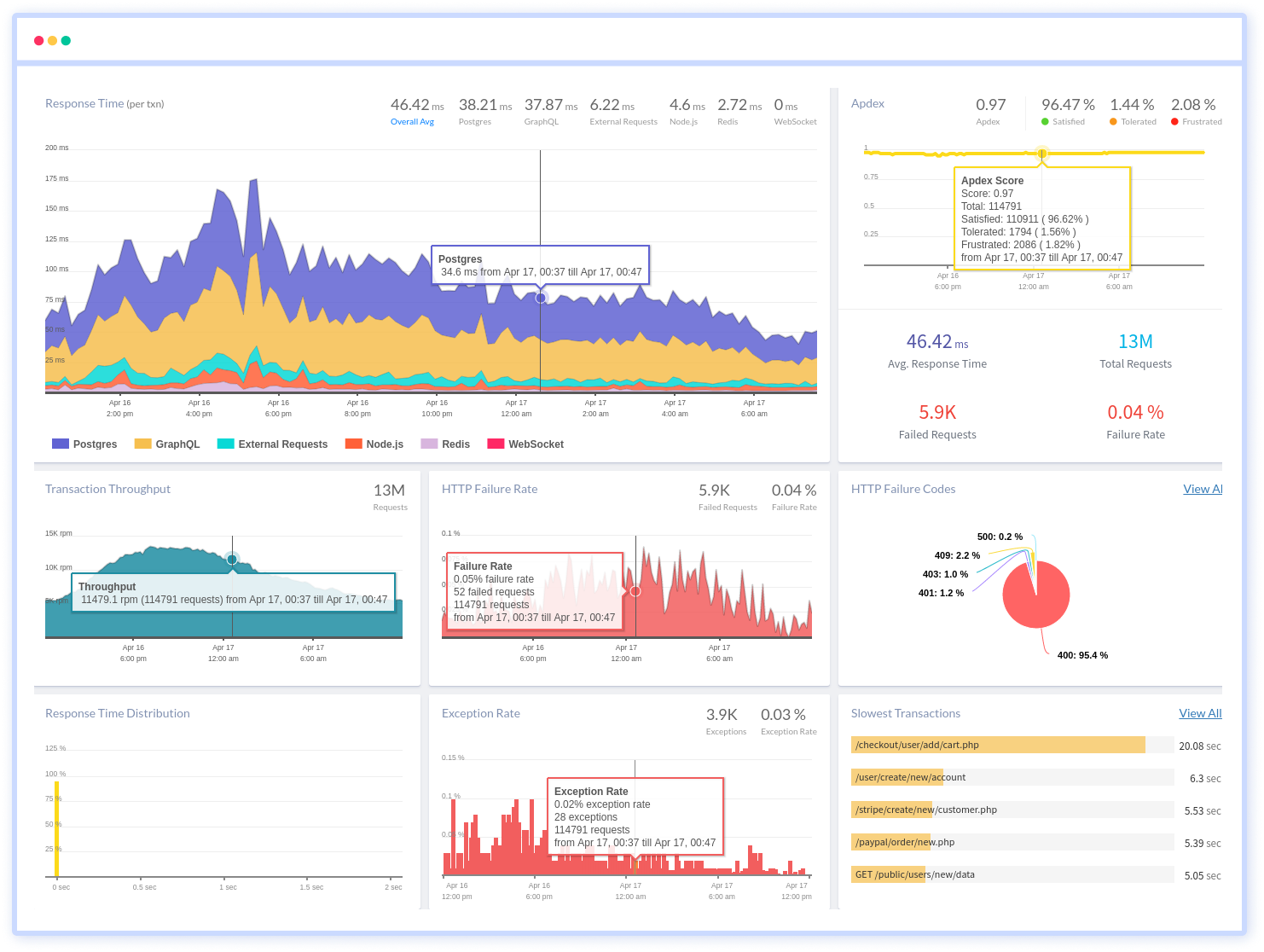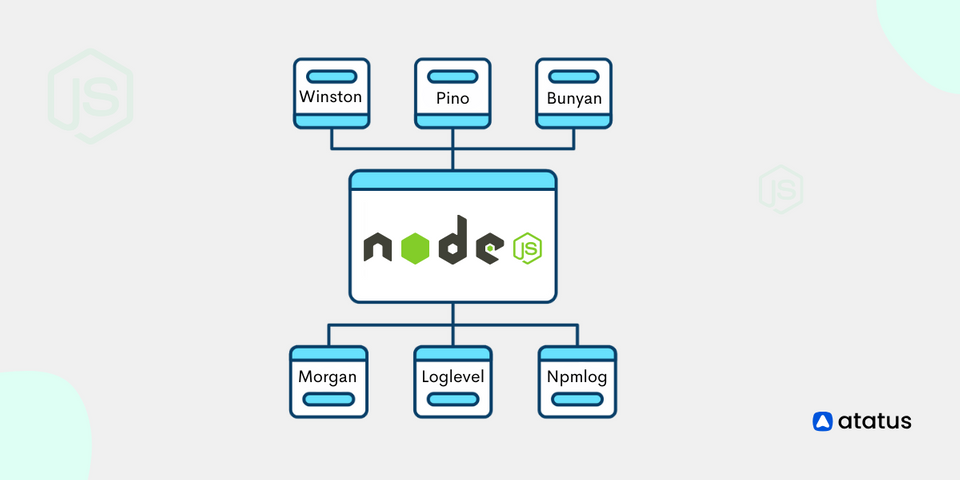Express vs. Hapi: Which is the Best Node.js Framework for Web Development?
In this digital era, numerous frameworks are accessible for web development. Among them, Node.js, a JavaScript-based framework, holds significant importance in the IT industry. One of its key advantages is its versatility, allowing developers to utilize it for both client and server-side scripting tasks.
As a server-side web application platform, Node.js is known for its speed and efficiency. Its ability to enable the construction of scalable web apps using a single programming language is a significant benefit for app development companies.
Node.js, one of the most prominent JavaScript runtime frameworks, is open-source, allowing developers to write code that works across several platforms, not just web browsers. Its cross-platform characteristics make it a versatile and powerful tool for creating web apps and services.
For web development, developers frequently employ Node.js frameworks such as Express.js, Hapi.js, Koa.js, NestJS, Meteor.js, Sails.js, and others. These frameworks are built on top of Node.js and provide a higher degree of abstraction, making it easier and faster to build online apps and APIs.
This blog post will delve into the world of developer-friendly Node.js frameworks like Express.js and Hapi.js. We will explore their unique features, differences, and similarities, providing valuable insights for developers looking to choose the right framework for their projects.
In this blog, we will cover the following topics:
- What is Express.js?
- Use cases of Express
- What is Hapi?
- Use cases of Hapi
- Express vs. Hapi: Similarities and Differences
- Example of Express vs. Hapi
- Which is the best one: Express vs. Hapi?
- Pros and Cons of Express.js
- Pros and Cons of Hapi
What is Express.js?
Express.js, a swift and minimalistic web application framework for Node.js, facilitates the creation of web applications and APIs by offering a robust set of features and tools. Renowned for its popularity and widespread usage, Express.js is a cornerstone of the Node.js ecosystem, streamlining the development process for developers.
Express.js is a fast, robust, and asynchronous Model-View-Controller (MVC) framework for Node.js. It simplifies server and route handling, making it ideal for designing various web applications.
With dynamic HTML page rendering and a powerful API for routing, Express.js is chosen for its high-speed I/O, non-blocking, and single-threaded nature. Additionally, many popular frameworks are built on top of Express.js, further cementing its popularity among developers.
The following apps are utilizing express.js for web development:
- Uber
- Accuweather
- IMDB
Use cases of Express
Express.js is a flexible online application framework with use cases in a variety of industries and applications. Express.js is widely used in the following situations:
- RESTful API Development: Express.js is frequently used to create RESTful APIs and web services, allowing frontend apps and backend servers to communicate.
- Microservices Architecture: The development of microservices-based architectures, in which applications are divided into smaller, independent services that communicate via APIs, is possible with Express.js.
- Proxy Servers: Express.js can function as a proxy server to manage and handle requests between clients and other backend services.
- Authentication and Security: Login and security techniques including user login, token-based authentication, and access control are frequently implemented using Express.js.
- Middleware Integrations: Express.js is used by developers to integrate several middleware components, making it possible to do operations like logging, error handling, compression, and authentication.
- Single-Page Applications (SPAs): Express.js is frequently used for the backend in SPAs that rely on frontend JavaScript frameworks to handle API queries and server-side rendering.
- Streaming Services: Applications that involve real-time streaming of audio, video, or other media content benefit from Express.js for handling the server-side functionalities.
- IoT Applications: Express.js can be used to create the backend of Internet of Things applications, allowing for data collection and processing from connected devices.
- Content Platforms: Blogs, news websites, and multimedia platforms often use Express.js for content management and delivery.
- Webhooks and Web Services: Webhooks and web services that enable data transfer and communication between many systems and platforms are made using Express.js.
What is Hapi?
Hapi is an influential and flexible web application framework for Node.js. Its main goal is to simplify the development of scalable and secure web applications and APIs. With a configuration-centric approach, Hapi offers high levels of customization and adaptability.
Hapi.js is a reliable and consistent open-source Model-View-Controller (MVC) framework used for structuring web applications and services. It effortlessly organizes API servers, websites, and HTTP proxy applications. Its strong plugin system allows for the swift addition of new features and bug fixes.
With routing, input and output validation, and caching capabilities, Hapi.js aids in constructing REST APIs, making it ideal for serving the needs of clients, including mobile and single-page applications.
The following apps are utilizing express.js for web development:
- Colonizers
- MasteryJs
- PayDash
- Postmile
Use cases of Hapi
Hapi.js is a flexible online application framework with a variety of real-world applications, such as:
- HTTP Proxy Applications: Making HTTP proxy servers that serve as a bridge between clients and other backend services is possible with Hapi.js.
- Configuration-centric Applications: Hapi.js provides a built-in configuration system, allowing developers to define settings, dependencies, and environment-specific configurations with ease. This feature is highly beneficial for applications that require extensive configuration management.
- Modular Architecture: Hapi.js follows a plugin-based architecture, enabling developers to extend and customize the application by adding or removing plugins. This modularity makes it an excellent choice for applications that need easy integration of additional functionalities.
- REST APIs: With its features for input validation, routing, and caching, Hapi.js excels at structuring RESTful APIs that support a variety of client applications, including mobile and single-page applications.
- Authentication and Authorization: Hapi.js offers authentication and authorisation functionality, making it suitable for secure applications that need user access control.
- Caching: Developers can enhance efficiency by saving frequently requested data using the server-side caching feature of Hapi.js.
- Input Validation: Hapi.js comes with a built-in input validation system using the Joi library, making it ideal for applications that demand strong validation of user input to ensure security and data integrity.
- Webhooks and Web Services: Building webhooks and web services using Hapi.js will enable data transfer and system communication.
Express vs. Hapi: Similarities and Differences
Hapi and Express are both well-liked Node.js web frameworks for creating web apps and APIs, but they differ from one another in a few key ways. Let's examine their parallels and distinctions:
| Feature | Express | Hapi |
|---|---|---|
| Application Architecture | Minimalist and flexible micro-framework | Opinionated and structured |
| Performance | Lightweight and fast | Efficient and well-performing | Ease of Use | Easy to learn and quick to get started | Slightly steeper learning curve |
| Routing | Basic routing; additional modules for validation | Built-in routing with built-in Joi for validation |
| Plugins | Limited built-in features; relies on middleware and third-party libraries | Core features through plugins |
| Middleware | Middleware functions | Plugin-based middleware system |
| Microservices Compatibility | Suitable for building microservices | Well-suited for microservices |
| Database Support | Handle database integration and queries themselves or use third-party libraries to manage database connections | Database connection through APIs and data caching to reduce the payload |
| Authentication | Requires third-party libraries or manual implementation | Built-in authentication strategies |
| Configuration | No strict conventions | Opinionated configuration |
| Error Handling | Customizable error handling | Customizable error handling |
| Scalability | Scalable but may need additional libraries or modules | Suitable for complex enterprise apps |
| Community | Large community and extensive ecosystem | Active community and growing ecosystem |
| Use Cases | Web applications, APIs, smaller projects | Enterprise applications, complex projects |
Example of Express vs. Hapi
Here are a few brief illustrations of the fundamental configuration and routing in both Express and Hapi:
Express Example:
const express = require('express');
const app = express();
const port = 3000;
app.get('/', (req, res) => {
res.send('Hello, Express!');
});
app.listen(port, () => {
console.log(`Express server running on: http://localhost:${port}`);
});Hapi Example:
const Hapi = require('@hapi/hapi');
const init = async () => {
const server = Hapi.server({
port: 3000,
host: 'localhost'
});
server.route({
method: 'GET',
path: '/',
handler: (request, h) => {
return 'Hello, Hapi!';
}
});
await server.start();
console.log('Hapi server running on:', server.info.uri);
};
init().catch((err) => {
console.error(err);
process.exit(1);
});In both cases, we've configured a server to respond with a Hello message when a request to the root path ('/') is performed. The @hapi/hapi package, which is the modern version of Hapi, is used in the Hapi example, while the express package is used in the Express example.
Comparing the two Examples
The Hapi example uses a configuration-based methodology; we construct routes using the server.route() method and specify the HTTP method, path, and handler function to handle the response to the request.
The Express example is more conventional and uses a callback function ((req, res) => { ... }) directly on the app instance to define the route.
While Express permits a more basic and free-form approach, Hapi offers more structure and enforces specific norms.
It is crucial to note that both Hapi and Express are sophisticated frameworks that can handle much more complex applications with capabilities such as middleware, route parameters, error handling, and so on. The choice between the two is determined by the project and development team's demands and preferences.
Which is the best one: Express vs. Hapi?
Here are the key points for when to consider using Express.js and when to consider using Hapi.js:
Express.js
- Ideal for smaller projects or lightweight applications that prioritize simplicity and ease of use.
- Follows a more flexible and minimalist approach, allowing developers to make their own architectural decisions.
- Suitable for projects with a well-defined structure that do not require an opinionated configuration system.
- Offers access to a large ecosystem of middleware and third-party libraries, thanks to its longer existence and larger community.
- Preferred by teams with experience in Express.js or those who value architectural freedom.
Hapi.js
- Best for large enterprise-level applications with high organization and structure requirements.
- Adopts a convention over configuration approach, ensuring consistency and reducing decision-making overhead.
- Suitable for projects that need extensive configuration management due to its built-in configuration system.
- Provides powerful caching capabilities and strong support for API documentation through plugins.
- Preferred by teams with experience in more structured frameworks.
Pros and Cons of Express.js
Below are some of the pros and cons of using Express.js:
Pros of Express.js
- Simplicity: For developers of all skill levels, Express.js is a fantastic option because it is simple to understand and use. Its straightforward development process is made possible by its simplistic design.
- Large Ecosystem: Express.js benefits from the vast npm (Node Package Manager) ecosystem, which provides a variety of open-source packages and libraries that are simple to incorporate into projects.
- Flexibility: Express.js is incredibly adaptable, enabling developers to organise their applications according to their unique requirements and tastes. It does not impose rigid conventions, making it adaptable to various use situations.
- Lightweight: Express.js has a compact footprint and low overhead due to its simple design, which leads to faster performance and better resource utilisation.
- Middleware Support: Because Express.js has strong middleware support, programmers may simply add new features to an application's request-response cycle.
- Routing: It is straightforward and convenient to handle various HTTP methods and URLs thanks to the framework's routing architecture.
Cons of Express.js:
- Lack of Opinionation: While Express.js' flexibility is a benefit, some developers may prefer a more opinionated framework with predefined standards and structures, in which case Express.js' flexibility may be a disadvantage.
- Learning Curve for Beginners: Express.js is reasonably simple, but it still necessitates a fundamental knowledge of Node.js and asynchronous programming ideas, which could be challenging for newcomers to JavaScript and server-side development.
- Manual Configuration: Express.js involves manual handling of numerous application-related tasks, which can be time-consuming, especially for bigger applications.
- Limited Built-in Features: Express.js does not include built-in support for functions like database ORM (Object-Relational Mapping), form validation, and authentication, in contrast to several other frameworks. Developers must use third-party libraries or implement these functionalities on their own.
- Single-Threaded Nature: Although Node.js' single-threaded architecture has benefits for some use cases, it can be a drawback for programs that involve significant CPU-intensive processing.
Pros and Cons of Hapi
Below are some of the pros and cons of using Hapi.js:
Pros
- Plugin system: The plugin architecture of Hapi makes it simple for developers to modularize their apps. This promotes code reuse and improves the organisation and maintenance of the codebase.
- Configuration-centric: Hapi prioritises configuration over code, which may result in more consistent and predictable application behaviour. Teams can more easily communicate and comprehend one another's work when using declarative configuration.
- Security: Hapi has built-in security capabilities to help guard against widespread web vulnerabilities like CSRF, XSS, and more. It promotes proper practises, lowering the possibility of including security issues in your application.
- Validation: Validation of the payload, query parameters, and requests and responses are all supported by the framework natively. Input validation is much easier as a result, and it also helps keep the application logic safe from corrupt data.
- Extensibility: The flexible architecture of Hapi enables programmers to build original plugins and add features as required. It is therefore a good fit for projects with particular needs.
- Scalability: Since Hapi is built to scale well, it is appropriate for large-scale applications that need high performance and concurrent request handling.
- Caching: The framework includes built-in caching technologies that can boost the efficiency of your application by lowering the number of database or API calls.
Cons
- Learning curve: Hapi's learning curve can be more challenging for novice developers than it is for certain other Node.js frameworks. It could take some time to become acclimated to the configuration-based approach, especially for people who are more accustomed to imperative code.
- Less adoption: While Hapi is a solid framework, it may have fewer resources and community support than more widely used frameworks such as Express.js. This can make discovering third-party plugins or community-driven solutions more difficult.
- Middleware limitations: Hapi's middleware framework is less adaptable than some other frameworks. Compared to Express.js, which gives better flexibility in this area, it can be trickier to construct complicated middleware setups.
- Performance overhead: The focus on configuration and extensibility in Hapi can result in some performance overhead when compared to lighter frameworks. This may be a problem for specific applications.
- Opinionated structure: The opinionated structure of Hapi may not be suitable for every developer's preferred coding style or architecture. Some developers may desire more flexibility in how they arrange their applications.
Conclusion
JavaScript and Node.js have indeed gained tremendous popularity for web development, as they enable rapid prototyping and allow building scalable server-side web applications with event-driven, non-blocking I/O models and asynchronous single-threaded programming.
When it comes to choosing between Node.js frameworks like Hapi and Express for your online application, there is no one-size-fits-all solution. The choice depends on the unique requirements of your project, your team's experience with the frameworks, and other criteria such as performance, scalability, and community support.
Both frameworks offer advantages and disadvantages, and your decision should be based on a careful examination of your project objectives as well as the advantages and disadvantages of each framework.
Node.js Monitoring with Atatus
Atatus keeps track of your Node.js application to give you a complete picture of your clients' end-user experience. You can determine the source of delayed response times, database queries, and other issues by identifying backend performance bottlenecks for each API request.

Node.js performance monitoring made bug fixing easier, every Node.js error is captured with a full stack trace and the specific line of source code marked. To assist you in resolving the Node.js error, look at the user activities, console logs, and all Node.js requests that occurred at the moment. Error and exception alerts can be sent by email, Slack, PagerDuty, or webhooks.
#1 Solution for Logs, Traces & Metrics
APM
Kubernetes
Logs
Synthetics
RUM
Serverless
Security
More





